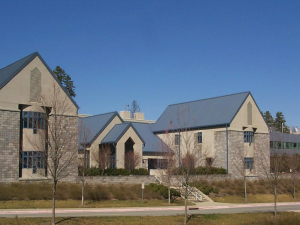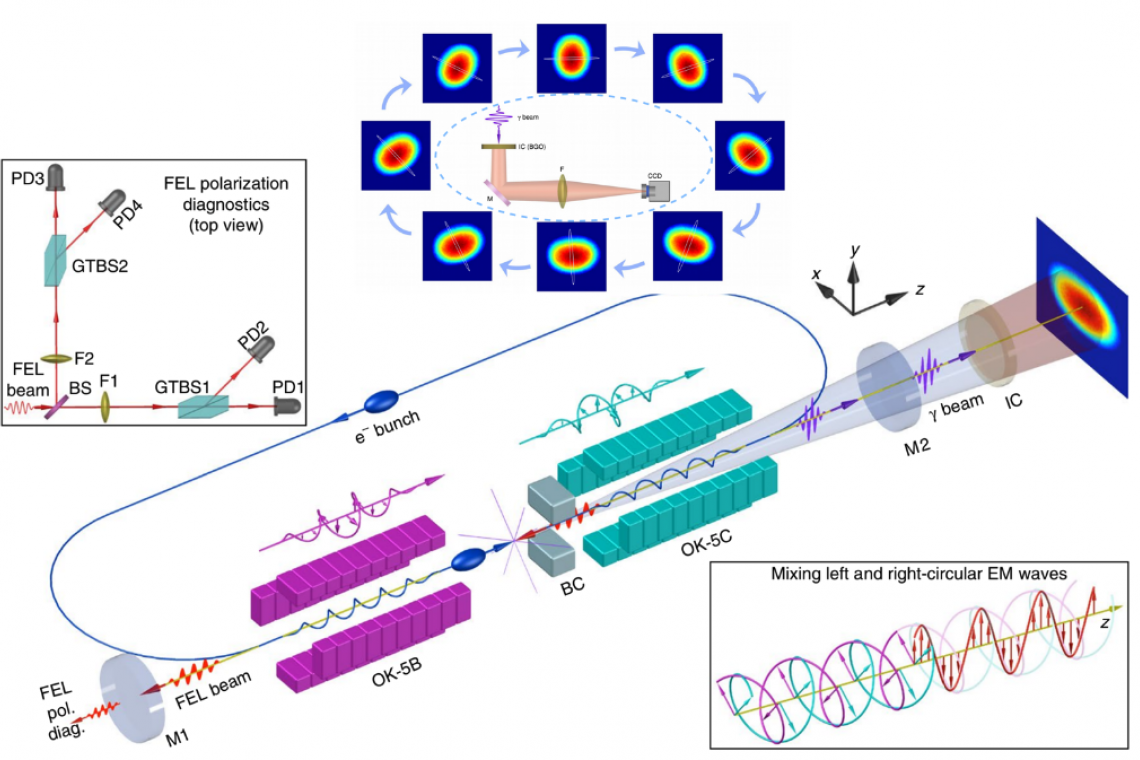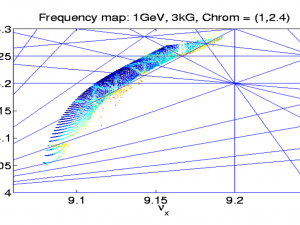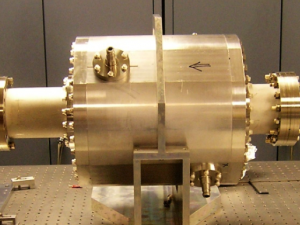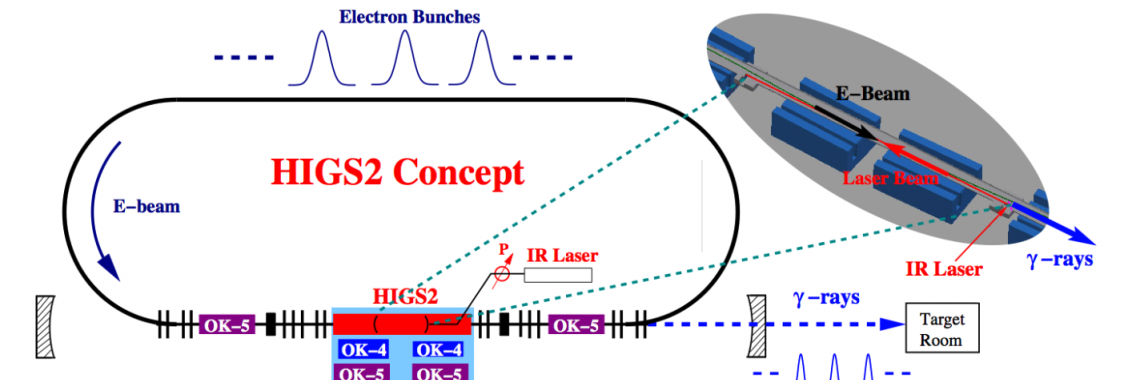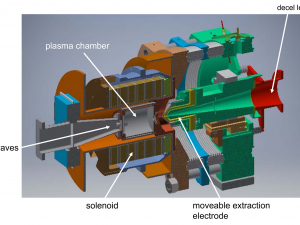Overview
Triangle Universities Nuclear Laboratory (TUNL) operates its largest on-site accelerator facility with two major light sources: a storage ring Free-Electron Laser (FEL) and the High Intensity Gamma-ray Source (HIGS) at the Duke Free Electron Laser Laboratory (DFELL). These accelerator-based photon sources are housed in a 52,000 square-foot facility (the DFELL building). Duke FEL is a unique storage ring oscillator FEL with the world’s longest laser cavity (about 54 meters) with an active medium. This FEL can produce coherent photon beams in a wide range of wavelengths from IR (1060 nm) to VUV (190 nm), making it a premier FEL research facility. The HIGS is the highest-flux Compton gamma-ray source in the world. It generates polarized gamma-ray beams with energies from 1 to 100 MeV. The HIGS is a world-class gamma-ray facility for photo-nuclear physics research.
Researchers at TUNL are working in the following areas:
- Research and development of Compton gamma-ray sources
- Free-Electron Laser research
- Accelerator and beam physics research and next-generation light source development
Projects
Free-Electron Laser Research
Our FEL research program has been continuously advancing FEL science and technology by developing novel FEL capabilities through exploring new dimensions of FEL dynamics. With one project, we have used two helical undulators of opposite magnetic field helicities to demonstrate full polarization control of an oscillator FEL, by realizing rapid switching between left- and right-circular polarizations, and producing a linearly polarized photon beam with an arbitrary polarization direction. In another project, we have demonstrated the first simultaneous two-color lasing using a storage ring FEL. The wavelengths of this two-color FEL, one in infrared and the other in UV, can be tuned independently or in the locked steps. At the HIGS, these novel FEL capabilities have been extended to the gamma-ray energy region, creating new possibilities for experimental nuclear physics research.
The Project Team: Liu, Mikhailov, Popov, Wu, Yan
Nonlinear Beam Dynamics and Light Source Development
This program addresses significant scientific issues in charged particle dynamics in circular accelerators. We study nonlinear dynamics of charged particles in complex magnetic fields and develop techniques to enlarge machine’s dynamic aperture using advanced techniques, such as Lie Algebra, frequency map, genetic algorithms, machine learning techniques, etc. With this program, we also advance the research and development of next-generation compact storage ring light sources.
The Project Team: Li, Mikhailov, Wu
Beam Instability Research
This research program focuses on collective effects in the storage ring due to intra-beam scattering, charged particle scattering with residual gas molecules, and particle beam interaction with its surroundings such as vacuum chambers. Various collective effects can lead to beam instability, therefore, limiting accelerator operation at high current. For our storage ring, we have developed bunch-by-bunch longitudinal and transverse feedback systems using the state-of-the-art field-programmable gate array (FPGA) technology to mitigate coupled-bunch instabilities. We are developing a set of new beam diagnostics to study intra-beam scattering effects in the storage ring for a wide range of beam parameters.
The Project Team: Li, Mikhailov, Wu, Yan
Next-generation Gamma-ray Source
Our light source program focuses on the development of next-generation Compton gamma-ray sources. Such a source can deliver 100 to 1,000 times more total flux and spectral flux than the current HIGS facility in the low energy region (< 20 MeV). This source will generate gamma-ray beams with unprecedented high-resolution and with the capability of rapid polarization switch. We are developing such a source as an upgrade of the HIGS facility. It will be powered by a high-finesse Fabry-Perot cavity driven by an external laser. This source will open the door for a wide range of new opportunities from basic science research to materials research to medical and industrial applications.
The Project Team: Li, Liu, Mikhailov, Popov, Wu, Yan
Accelerator and Ion Source Physics – Upgrading the LENA ECR source
We are upgrading LENA’s high-intensity, pulsed, electron-cyclotron-resonance ion source by replacing the solenoid around its plasma chamber and adding an extended steel yoke around its beam extraction aperture. Our goal is to improve the solenoid’s 87.5 mT B-field’s uniformity, thereby increasing the plasma’s ionization efficiency. That should improve both the intensity and emittance of the extracted proton beam. A pulsed valve also is being added to admit H2 gas only during beam pulses. This should improve the vacuum in the downstream acceleration column. That will reduce the portion of the column’s current load originating from beam ionization of background gas. These changes will be supported by a new control system to allow seamless local and remote ion source operation.
The Project Team: A. Champagne, T. Clegg (UNC/TUNL); T. Chappelow, B. Carlin, A. Lauer (TUNL)
Publications: J.M. Cesaratto, et al. Nucl. Instrum. and Meth. A623 (2010) 888-894;
A.L. Cooper, et al., Review of Scientific Instruments 89, 083301 (2018)

